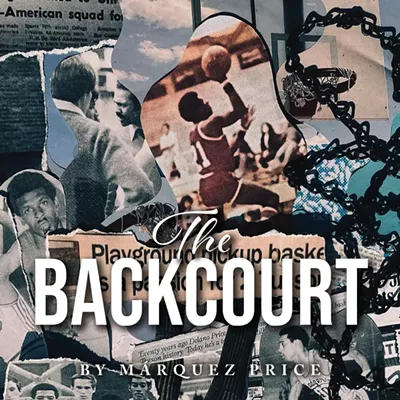Imagine that you're engaged in an educational enterprise, and it is your responsibility to see to it that the young people who are involved have as equal of an opportunity as possible to participate and succeed. Heading in, you realize that there are two distinct groups of young people, so you want to keep an eye out for any discernible discrepancies in the outcome.
When the event is done, you find that kids in Group P had four times more opportunity than those in Group Q. Furthermore, the Group P kids went on to grab 90 percent of the quantifiable success in the enterprise. One might think that results like that would be alarming to those in charge. If Groups P and Q were, say, boys and girls, there would be committees and task forces looking into the cause of the discrepancy and searching for solutions. If P and Q were white kids and black kids, there would be a federal lawsuit.
Yet when the Arizona Interscholastic Association (AIA) decided to combine the state's smallest schools with much-larger schools, those in charge deemed it a glowing success and patted each other on the back for a job well done.
In the recently completed state track meet, the AIA combined almost equal numbers of small (1A) schools—including Green Fields, where I coach—with significantly larger 2A schools, with predictable (and decidedly unequal) results. Among them:
• In the boys' team standings, 2A schools grabbed the top eight spots and 17 of the top 20. On the girls' side, 2A teams nabbed the first nine spots and 12 of the top 13. (In a sport like track, team titles are won not by schools with one or two outstanding individuals, but by squads with lots of depth.)
• With the AIA limiting the number of kids who could qualify in each event, there were events in which all 24 of the qualifiers were from 2A schools.
• Despite almost equal numbers of 1A and 2A schools, 2A athletes took 80 percent of the qualifying spots and scored nearly 90 percent of the points at the meet.
The better-to-be-lucky-than-good AIA executive board might just weather the storm, not out of merit, but because of the fractious nature of the widespread opposition. Coaches and athletic directors are having trouble determining just how much they hate the new system. Some of those people who actually deal directly with—and care about—student athletes want to challenge the AIA in court over issues involving Title IX and gender-equity issues. Others want to organize all-1A postseason events and basically dare the AIA to issue sanctions. And still others (a growing number) want the 1A schools to secede from the AIA altogether.
Depending on which member of the executive board you ask, the dismantling of the multiclass system that served Arizona's student-athletes so well was prompted by:
• Difficulty in finding venues for state tournaments, even though, in sports like volleyball and basketball, a nice, big high school gym (like the ones at Amphi or Catalina Foothills) serves the players and fans better than a cavernous and expensive arena.
• An AIA budget deficit, a significant portion of which can be traced to a disastrous deal the AIA entered into with the University of Phoenix Stadium in Glendale for some football playoff games.
• A completely unsubstantiated claim that the reorganization would save the individual schools money.
• A nagging suspicion that too many of Arizona's kids were experiencing various levels of success, and that such success should be severely limited to an elite few.
• A deep-seated desire to have Arizona be more like Pennsylvania.
(All of these excuses have been offered up at one time or another by AIA bigwigs Chuck Schmidt and Dr. Harold Slemmer. The Pennsylvania one is especially odd. Why would Arizona want to be like Pennsylvania?)
Whereas, in the past, kids could qualify for the state tournament by placing at season-ending regional meets, this year, the AIA did away with those meets and said that kids could only qualify for state at costly invitational meets.
Said one disgruntled coach, "We used to go to one invitational during the season as a treat for the kids and then aim for (the season-ending) regionals, but now we're forced to spend thousands of dollars that we don't have, and (fewer) kids get to go to state. Real good system."
Also, in 2010, the AIA ran the 1A, 2A, and 3A meets concurrently at one site. This year, they ran the (combined 1A and 2A) Division IV meet at one site for a total savings of zero dollars. And zero cents.
Perhaps it's true that far more damage is done by entrenched bureaucracies than by the elected officials who are ostensibly in charge of said bureaucracies. All I know is that, under this new system, fewer kids are participating; fewer kids are experiencing success; and those adults in charge of running the state tournaments and meets are doing about half as much work as they used to—and still getting paid the same.








